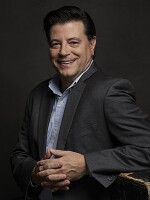One of the new laws that took effect on January 1 is a measure that switches out the decades-old handicap symbol with a new dynamic logo.
"It's 45 years old," said Governor Dannel Malloy, speaking last summer at the bill-signing ceremony for House Bill 1050, which modernizes the symbol for people with disabilities. "It was developed at a different time, when our own ideas as a culture and a society were much more concentrating on that which held people back, as opposed to that which moves people forward. and so it was time."
At first glance, the new logo is not much different than the traditional one.
It is still a white stick figure in a wheelchair on a blue background, but now the stick figure is leaning forward. Its arms are bent back like a wheelchair racer in motion.
"When I looked at it -- and certainly when the governor looked at it -- we saw it for the spiritual, if you will, sense of what it is trying to represent, to how that there is an active component, an active element to the disabled community we felt was the most important thing," said Jonathan Slifka, Malloy's Liaison to the Disabled Community. "We felt there was no better way to show it than the symbol we will be using going forward."
But not everyone in the disabled community agrees.
During public testimony on House Bill 5050 last year, several disability advocates told lawmakers that the new logo is unnecessarily divisive and exclusionary.
"It splits between people who want to show success through motion, and those of us who do not push our own wheelchairs, and therefore feel criticized by the symbol that should empower us," said Cathy Ludlum, a disability advocate. She suffers from a neuromuscular disorder, and is confined to a powered wheelchair.
"When I first saw this symbol, I thought of people exactly like Cathy," Slifka said. He was born with spina bifida, and gets around in a manual wheelchair. "It truly embodies someone like her, who in spite of her limitations, is extremely active person within the disability community," he said.
The new disabled access signs will start showing up either in new construction, or in places where an old sign is in need of replacement.
Several Connecticut businesses, including Cigna, began displaying the new logo last year.


